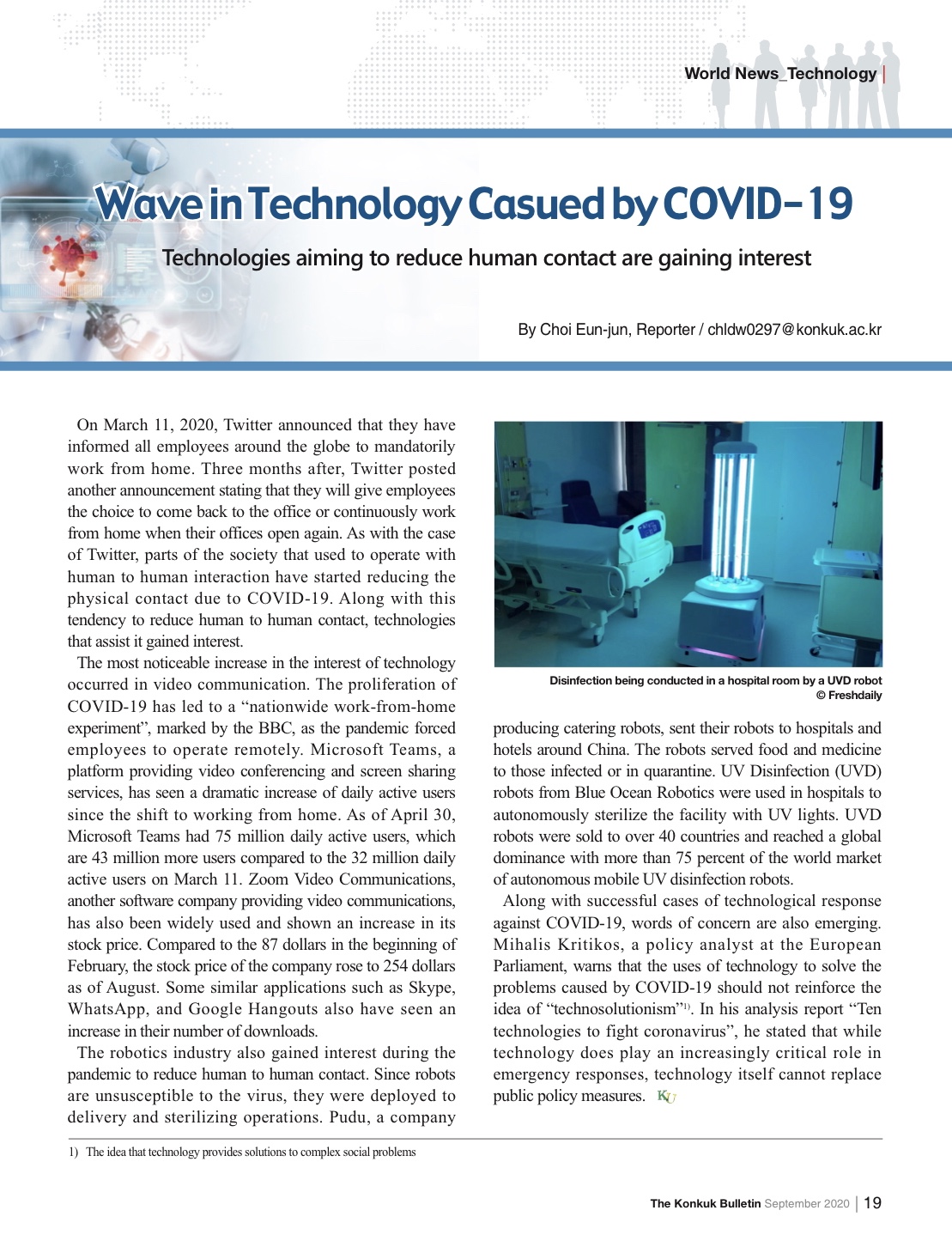Technologies aiming to reduce human contact are gaining interest

On March 11, 2020, Twitter announced that they have informed all employees around the globe to mandatorily work from home. Three months after, Twitter posted another announcement stating that they will give employees the choice to come back to the office or continuously work from home when their offices open again. As with the case of Twitter, parts of the society that used to operate with human to human interaction have started reducing the physical contact due to COVID-19. Along with this tendency to reduce human to human contact, technologies that assist it gained interest.
The most noticeable increase in the interest of technology occurred in video communication. The proliferation of COVID-19 has led to a “nationwide work-from-home experiment”, marked by the BBC, as the pandemic forced employees to operate remotely. Microsoft Teams, a platform providing video conferencing and screen sharing services, has seen a dramatic increase of daily active users since the shift to working from home. As of April 30, Microsoft Teams had 75 million daily active users, which are 43 million more users compared to the 32 million daily active users on March 11. Zoom Video Communications, another software company providing video communications, has also been widely used and shown an increase in its stock price. Compared to the 87 dollars in the beginning of February, the stock price of the company rose to 254 dollars as of August. Some similar applications such as Skype, WhatsApp, and Google Hangouts also have seen an increase in their number of downloads.
The robotics industry also gained interest during the pandemic to reduce human to human contact. Since robots are unsusceptible to the virus, they were deployed to delivery and sterilizing operations. Pudu, a company producing catering robots, sent their robots to hospitals and hotels around China. The robots served food and medicine to those infected or in quarantine. UV Disinfection (UVD) robots from Blue Ocean Robotics were used in hospitals to autonomously sterilize the facility with UV lights. UVD robots were sold to over 40 countries and reached a global dominance with more than 75 percent of the world market of autonomous mobile UV disinfection robots.
Along with successful cases of technological response against COVID-19, words of concern are also emerging. Mihalis Kritikos, a policy analyst at the European Parliament, warns that the uses of technology to solve the problems caused by COVID-19 should not reinforce the idea of “technosolutionism”1). In his analysis report “Ten technologies to fight coronavirus”, he stated that while technology does play an increasingly critical role in emergency responses, technology itself cannot replace public policy measures.
1) The idea that technology provides solutions to complex social problems

